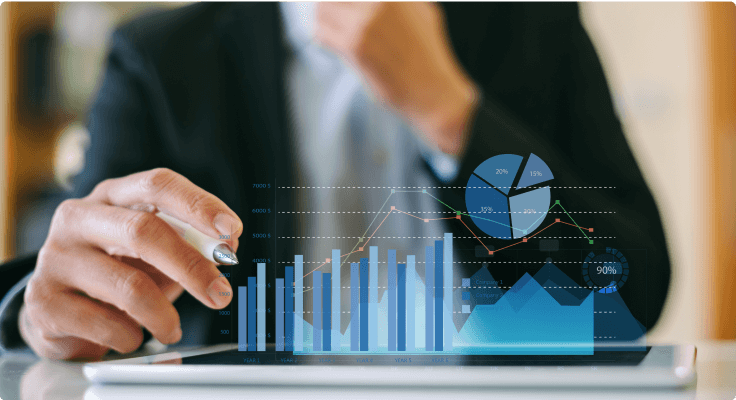Weekly report courtesy of Eurex
Everything is open again in the US presidential election. After the stock markets had previously been betting on Trump’s re-election and a rise in smaller companies and oil stocks, things could now go the other way again.
22 July 2024. FRANKFURT (Börse Frankfurt). Joe Biden’s withdrawal as US presidential candidate is the number one topic on the stock markets. The consequences are still unclear: would the Democrats really have a better chance with a new candidate, Kamala Harris? Or can the party find another promising candidate? The Trump trade has already been played out on the market recently: Betting on a second term for Donald Trump. Small US companies and oil and gas producers benefited, while tech stocks suffered. “It seems quite possible that the so-called ‘Trump trade’ could now be priced out somewhat,” commented Deutsche Bank on Monday morning.
According to Robert Halver from Baader Bank, a Trump victory would benefit second-tier US stocks. After all, the companies listed in the Russell 2000 generate an average of around 80 percent of their sales in North America. “Consequently, according to analyst estimates, earnings growth for second-tier stocks should be more than twice as strong as that of blue chips on average every year until 2026.” The big tech companies will then no longer have no alternative.
Uncertainty due to the US election, interest rate worries, IT disruption
On Monday morning, the DAX stands at 18,262 points after just under 18,172 at the close of trading on Friday and a weekly drop of 3 percent. “There are several reasons for the increased risk aversion,” explains Helaba analyst Ulrich Wortberg: political uncertainty in the US and the possible deterioration in trade relations with the eurozone, the significant correction in US technology stocks and the fact that expectations of interest rate cuts on both sides of the Atlantic could not be pushed further. “In addition, the global IT disruption on Friday caused uncertainty.”
There were also losses on Wall Street on Friday, after the Dow Jones had reached a new all-time high in the middle of the week. The Nasdaq 100 has already been weakening for a week and a half and, at 19,592 points, has fallen quite a way from its record high of 20,748 points.
Statistics do not bode well
Things do not look good on the chart: According to Christoph Geyer, the DAX has just reached a trend line, but the last significant low from mid-June is much more important. “This should not be undercut, as otherwise the situation will become critical according to the Dow theory,” explains the chart technician. The latest sell signals in the indicators have not yet been fully processed, which is why at least the last low should still be expected to be reached. The slight increase in turnover also indicates increasing selling pressure. “Uncertainty is therefore growing, which should bring more sellers onto the scene.” Geyer assumes that the new week will be decisive for the further trend. “The statistics don’t bode well for the coming weeks.”
Good quarterly figures expected
According to DekaBank, the next two weeks in Europe and the USA are the most important in the reporting season for the second quarter. From the Stoxx 600, 35 percent of the market capitalization is reporting this week and 25 percent next week, from the S&P 500 22 and 40 percent. “The first figures were convincing,” comments the bank. It continues to expect a good quarterly reporting season on both sides of the Atlantic.
Important economic and business events of the week
Wednesday, 24 July
10.00 am. Eurozone: Purchasing Managers’ Index July. DekaBank continues to expect a divided economy. While the service sector is probably on a clear growth path, the sub-index for industry continues to point to a recession.
Thursday, 25 July
10.00 am. Germany: ifo Business Climate Index July. After the sentiment barometer fell from 89.3 to 88.6 points in June, a slight countermovement to 89 points is expected for the July survey, according to Deutsche Bank.
2.30 pm. USA: GDP second quarter. Despite recent weaker economic data, the US economy continued to grow in the second quarter, says Commerzbank. At 2.2 percent (consensus 1.7 percent), the annualized growth rate compared to the previous quarter will even be slightly higher than in the first quarter. Private consumption is likely to have contributed significantly to this.
Friday, 26 July
2.30 pm. USA: Price index consumer spending excluding food and energy June. According to DekaBank, the US Federal Reserve’s key price measure is expected to show a slightly stronger price increase than consumer prices in the previous month. If this is extrapolated for the year as a whole, however, the increase would be within the Fed’s target range of 2%.
Trade Micro-DAX® and Micro-EURO STOXX 50® Futures at EUR1.50*. Learn more here.
Trade Stocks, ETFs, Forex & Futures on Phillip Nova
Features of trading on Phillip Nova
- Gain Access to Over 20 Global Exchanges
Capture opportunities from over 200 global futures from over 20 global exchanges
- Trade Opportunities in Global Stocks
Over 11,000 Stocks and ETFs across Singapore, China, Hong Kong, Malaysia and US markets.
- Over 90 Technical Indicators
View live charts and trade with ease with over 90 technical indicators available in the Phillip Nova platform
- Trade Multiple Assets on Phillip Nova
You can trade Stocks, ETFs, Forex and Futures on a single ledger with Phillip Nova














